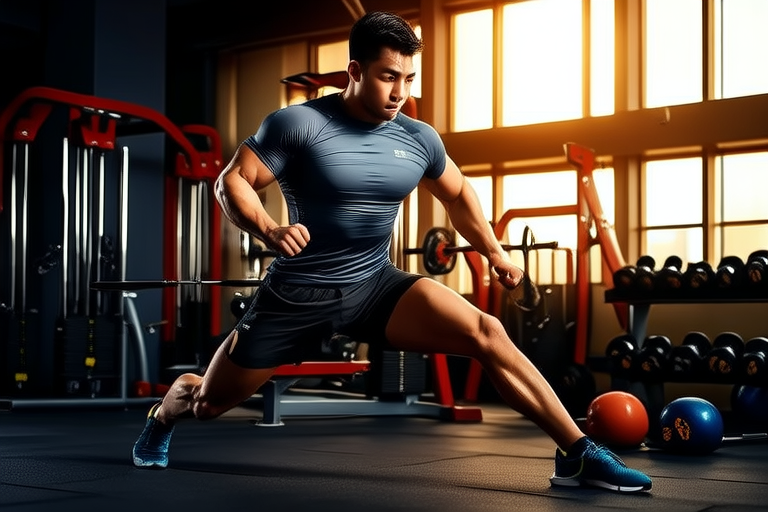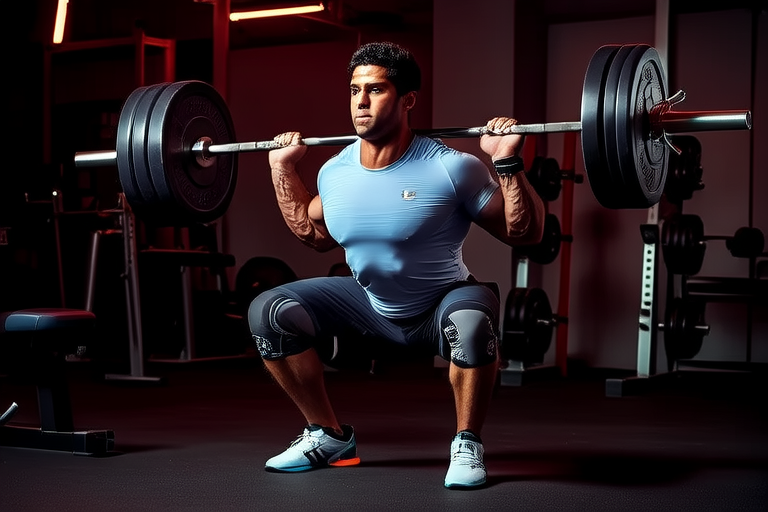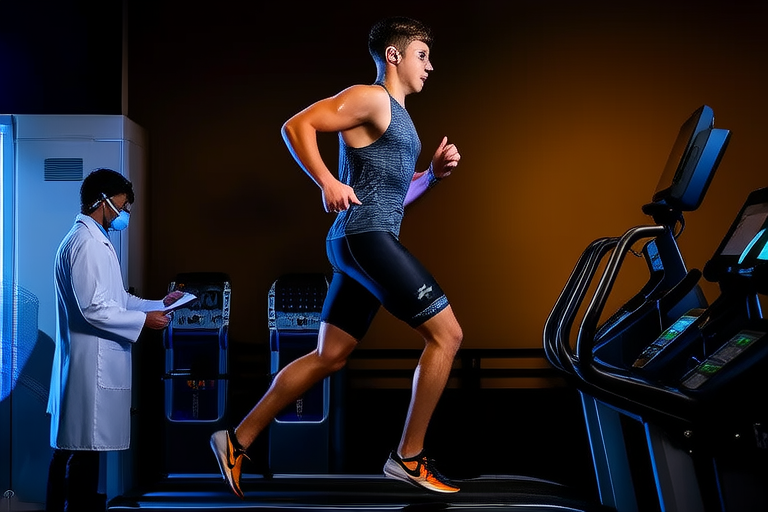Maximizing Performance: Key Insights from Sports Science and Essential Precautions
Introduction
The pursuit of excellence in sports is driven by the relentless desire to push boundaries and achieve peak performance. Athletes and coaches alike are constantly seeking ways to optimize physical capabilities, mental resilience, and overall health. Sports science plays a pivotal role in this endeavor, offering evidence-based strategies that can enhance athletic performance while ensuring longevity in the sport. By integrating insights from various disciplines such as physiology, psychology, nutrition, and biomechanics, athletes can maximize their potential while minimizing risks.
Understanding the complexities of human performance requires a multidisciplinary approach that considers both short-term gains and long-term sustainability. This article delves into the key insights from sports science and outlines essential precautions to ensure that athletes not only excel in their chosen discipline but also maintain their health throughout their careers.
Key Insights from Sports Science
Nutrition
Athletic performance heavily depends on proper nutrition, which fuels the body with the necessary energy and nutrients required for optimal functioning. A balanced diet rich in carbohydrates, proteins, fats, vitamins, and minerals is crucial for sustained energy levels and muscle repair. Carbohydrates serve as the primary fuel source during intense activities, while proteins are vital for muscle growth and recovery. Adequate hydration is equally important, as even mild dehydration can significantly impair physical and cognitive functions.
Timing of meals and snacks is another critical aspect of nutritional planning. Pre-exercise meals should be consumed several hours before activity to allow for digestion and absorption of nutrients. Post-exercise nutrition focuses on replenishing glycogen stores and repairing damaged tissues. Recovery meals containing a combination of carbohydrates and proteins are recommended within 30 minutes to an hour after exercise.
Training Techniques
Effective training programs are designed to improve specific aspects of performance, such as strength, speed, endurance, and flexibility. Periodization, a structured approach to training that alternates between phases of high-intensity work and active recovery, helps prevent overtraining and promotes continuous improvement. Interval training, characterized by alternating periods of high-intensity effort with recovery intervals, has been shown to enhance cardiovascular fitness and increase anaerobic capacity.
Strength training is fundamental for building muscle mass and improving power output. Resistance exercises like weightlifting, plyometrics, and resistance band workouts target different muscle groups and enhance neuromuscular coordination. Flexibility training, incorporating stretching and mobility exercises, improves range of motion and reduces the risk of injury. Additionally, incorporating proprioceptive training, such as balance exercises, can enhance stability and reduce the likelihood of falls.
Recovery Methods
Proper recovery is essential for allowing the body to adapt to the stress of training and competition. Active recovery involves low-intensity activities, such as walking or swimming, which help clear lactic acid and promote blood flow to fatigued muscles. Passive recovery techniques, like massage therapy, hydrotherapy, and compression garments, aid in reducing muscle soreness and swelling. Sleep is often overlooked but is one of the most critical components of recovery. During sleep, the body repairs tissues, consolidates memories, and regulates hormones. Aim for 7-9 hours of quality sleep per night.
Hydration, nutrition, and sleep form the foundation of effective recovery strategies. Ensuring adequate intake of fluids, electrolytes, and macronutrients supports the body’s natural healing processes. Moreover, incorporating mindfulness practices, such as meditation and deep breathing exercises, can help manage stress and promote mental well-being.
Mental Preparation
Mental toughness is a significant factor in determining athletic success. Visualization techniques, where athletes mentally rehearse their performances, have been shown to improve confidence and reduce anxiety. Goal setting, breaking down larger objectives into smaller, achievable milestones, fosters motivation and provides a sense of direction. Positive self-talk, reinforcing positive beliefs about one’s abilities, can enhance self-esteem and resilience. Mindfulness practices, focusing on the present moment without judgment, can improve concentration and reduce distractions.
Cognitive-behavioral strategies, such as reframing negative thoughts and challenging irrational beliefs, can help athletes develop a more adaptive mindset. Working with sports psychologists or counselors can provide personalized guidance and support in building mental resilience and coping mechanisms.
Essential Precautions
Safety Measures
Preventing injuries is paramount for maintaining athletic performance and ensuring long-term health. Proper warm-up and cool-down routines are essential for preparing the body for physical exertion and facilitating recovery. Dynamic stretches, which involve controlled movements that mimic the activity to come, are preferred over static stretches for warming up. Cool-down sessions should include gentle stretching and relaxation exercises to promote blood circulation and reduce muscle stiffness.
Wearing appropriate protective gear, such as helmets, mouthguards, and knee pads, can minimize the risk of injuries during contact sports. Regular maintenance of equipment, ensuring it fits properly and is in good condition, is also crucial. Athletes should also be aware of environmental factors, such as heat and humidity, which can impact performance and increase the risk of heat-related illnesses.
Preventive Healthcare
Regular medical check-ups and screenings can identify potential health issues early, allowing for timely intervention and management. Monitoring heart rate variability, blood pressure, and other vital signs can provide valuable insights into an athlete’s overall health status. Routine blood tests can detect deficiencies in essential nutrients, enabling targeted supplementation if needed.
Vaccinations and immunizations are important preventive measures against infectious diseases. Athletes who travel frequently or compete in international events may be exposed to different pathogens, making vaccinations especially relevant. Additionally, regular dental check-ups and oral hygiene practices are essential for maintaining overall health and preventing infections that could affect performance.
Injury Prevention
Implementing injury prevention programs that focus on strengthening weak areas and improving movement patterns can significantly reduce the incidence of injuries. Balance training, core stabilization exercises, and proprioceptive drills are particularly beneficial. Athletes should also pay attention to their technique and form during training and competition, as poor mechanics can lead to repetitive strain injuries.
Gradual progression in training intensity and volume allows the body to adapt to new demands without overwhelming it. Cross-training, incorporating activities that complement the primary sport, can enhance overall fitness and reduce the risk of overuse injuries. Proper rest and recovery are equally important, as insufficient downtime can lead to fatigue and increased susceptibility to injuries.
Conclusion
Optimizing athletic performance is a multifaceted process that requires careful consideration of various factors, including nutrition, training techniques, recovery methods, and mental preparation. By leveraging the insights provided by sports science, athletes can enhance their physical capabilities, mental resilience, and overall well-being. However, it is crucial to strike a balance between pushing limits and maintaining health. Ignoring the importance of recovery, proper nutrition, and preventive healthcare can lead to burnout, chronic injuries, and diminished performance.
Ultimately, the goal is to achieve sustainable success that allows athletes to enjoy their sport for many years to come. By prioritizing both performance enhancement and injury prevention, athletes can maximize their potential while ensuring long-term health and happiness.










